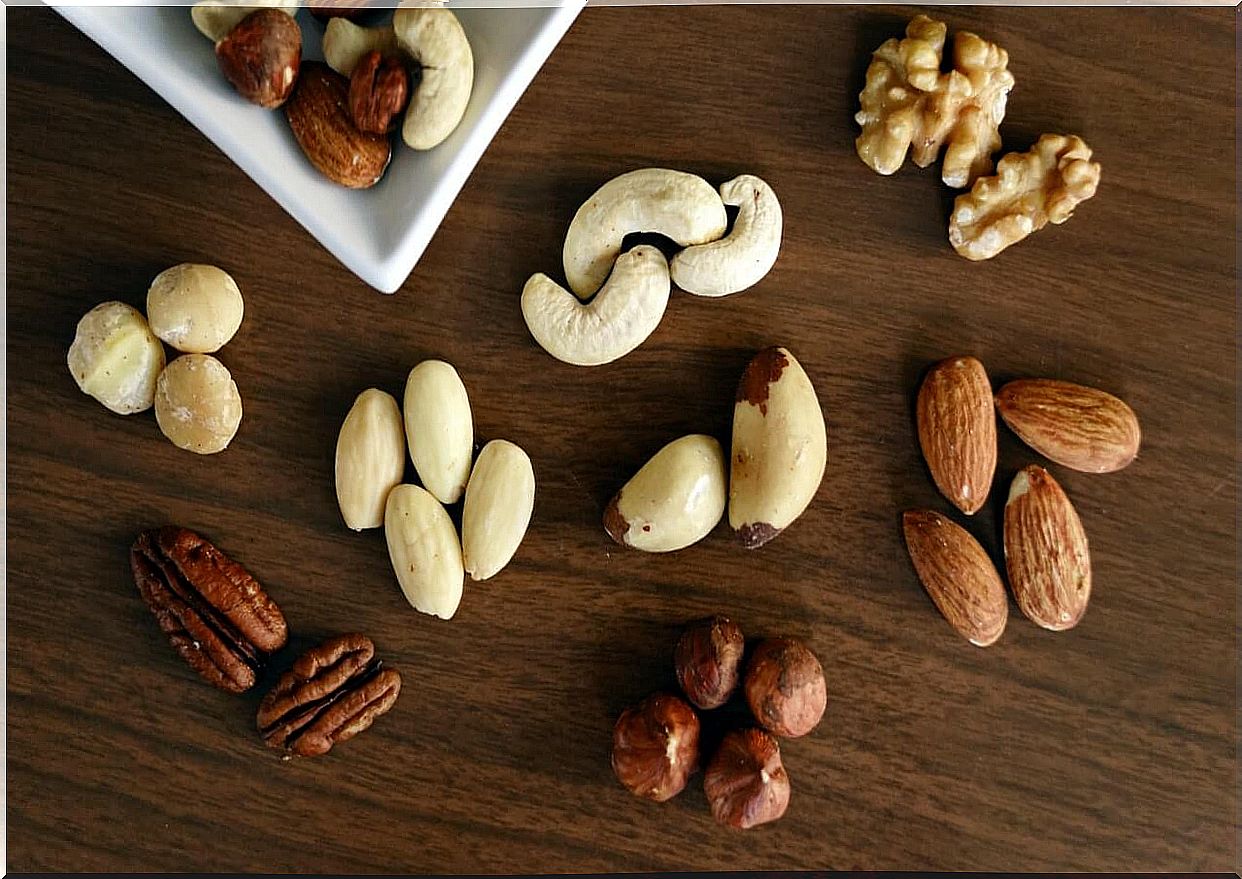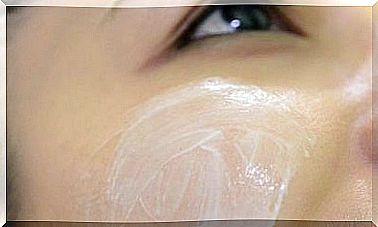Nuts In Infant Feeding: When To Introduce Them?
Nothing more expectant than introducing new foods to our children. Which ones do they play according to their age and which ones are the most allergens? They are frequently asked questions. For example, introducing nuts in children’s food causes some concern, since the statistics on their consumption indicate them as one of the most allergic.
These findings stipulate that nuts can cause allergies in 8% of children in Western countries and 2.1% in children in the United States, with an increase year over year. Some of the reactions can be fatal.
However, the high levels of energy they provide, the value of their proteins, unsaturated fats, fiber, vitamins and minerals, select them as the most nutritious substances in children’s diets.
What are nuts?
The Spanish Food Code describes nuts as those whose edible part has less than 50% water in its composition. Its usable part is the seed. Within this group we find almonds, hazelnuts, walnuts, pine nuts, pistachios, peanuts and chestnuts.
A common characteristic of these fruits is their high caloric content. Each gram of the fruit provides 5.3 to 6.6 calories. This is due to its high fat content and little water.
They have a high proportion of protein, fiber, vitamin E, folic acid and many minerals necessary in the growth of children, such as calcium, zinc, magnesium and selenium, among others.

When can we include nuts in infant food?
There are two important reasons to take into account before incorporating nuts into our babies’ diet. On the one hand, the hardness and size make them a dangerous food for the little ones.
This is supported by the Spanish Society of Pulmonology and Thoracic Surgery (SEPAR), who declare that the maximum incidence of choking occurs in children under 3 years of age and the most frequent foreign bodies are usually nuts or seeds, as well as toys and stones.
The SEPAR also explains that the frequency of choking and asphyxia in young children is due to their lack of molars for chewing and the lack of coordination between swallowing and the closure of the glottis. So prevention is essential.
That is why, within the recommendations of the Spanish Association of Pediatrics for complementary feeding, it is specified not to offer whole nuts before 5 or 6 years of age. Instead, it is suggested to grind them.
The second reason that justifies the care to include nuts in children is the allergenic characteristic of these foods. A group of immunologists comments that the allergy to nuts usually appears between 3 and 5 years of age. But many parents choose to offer them at older ages, since they think that this way they will be able to prevent them.
However, it has been confirmed through some observations that the early inclusion of nuts in young children can protect them more.
Other findings support these recommendations. 80% of babies between 4 and 11 months did not develop allergies when consuming peanuts. The pediatrician and allergist Yan Yan, from Columbia Allergy , comments that the introduction of allergenic foods at an early age allows a training of the immune system to recognize them as friendly compounds.
Specialists also comment that sustained exposure to the dried fruit several times a week for several months is important.
How to add nuts to baby food
To include nuts in children’s food you should never give them whole, but crushed or ground, incorporating them in some preparations, such as the following:
- Vegetable puree with ground or powdered pine nuts.
- Yogurts or fruit porridges that acquire a rich flavor with ground almonds or hazelnuts.
- You can soak them in hot water for 2 hours and then blend them. You will form a paste similar to a nut butter that you can combine with soups, strains or purees.
- Also mix the dried fruit powder with your favorite cereal or baby food.
- For older children, spread peanut butter on toast or cookie.
- Cakes with dried fruit flour, so that the older ones can enjoy a delicious snack.
Nutritional benefits of nuts
The nutritional properties of nuts described by Ávila Granados make them first-rate foods in the growth and development of children. Let’s review why:
- The fat content makes them an ideal source of healthy energy, especially at breakfast, recess or snacks. The type of fat in nuts is polyunsaturated, with essential fatty acids such as omega 6 and omega 3. Oleic also represents a fatty acid with health benefits.
- No matter how delicious these are, their consumption should not be abused, since excess calories leads to overweight, which should be avoided from an early age.
- They are an excellent source of minerals. Selenium increases the absorption of vitamin E and activates the functioning of the immune system. Copper participates in the transport of iron, in the absorption of vitamin C and maintains the health of the bones. Zinc also ensures the proper functioning of the immune system, intestinal cells, and bone health.
- They are a source of vitamin E, a powerful antioxidant that protects cells and reduces cardiovascular risk. They are also abundant in folic acid, which reduces atherosclerotic risk.
- The protein content ranges between 14% and 20% and the peanut can reach 27%. The value of its proteins is 75%, as established by the FAO. That is, they contain a good amount of essential amino acids to ensure proper growth.

How to recognize an allergic reaction?
The most commonly allergic nuts are peanuts, hazelnuts, almonds, and walnuts. If it is the first time that you introduce them, you must be attentive and observe the symptoms and signs of a possible reaction.
There may be a runny nose, red skin, shortness of breath, swelling of the mouth or throat, tingling of the tongue, hives all over the body, and tightness when swallowing. It also causes conjunctivitis, rhinitis, vomiting, diarrhea, and anaphylaxis, which can be fatal.
When to go to the doctor?
If you notice that the symptoms are mild, you should call your pediatrician. But if you notice shortness of breath, chest pain, weak pulse or loss of consciousness, you should immediately contact the emergency room or go to the doctor at once.
Nuts, despite their allergenic potential, can bring your children the necessary nutrients to harmonize development and growth. That is why it is recommended to introduce them in the baby’s diet and be attentive to any symptoms of food allergy to call the specialist. Remember to grind or pulverize them.









